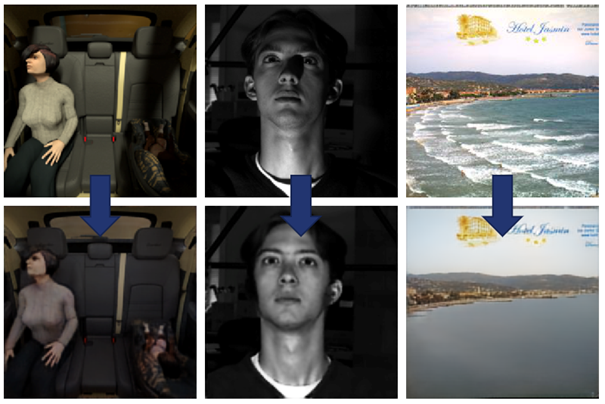The Winter Conference on Applications of Computer Vision (WACV 2021) is IEEE’s and the PAMI-TC’s premier meeting on applications of computer vision. With its high quality and low cost, it provides an exceptional value for students, academics and industry researchers. In 2021, the conference is organized as a virtual online event from January 5th till 9th, 2021.
The four accepted papers are:
1. SSGP: Sparse Spatial Guided Propagation for Robust and Generic Interpolation
René Schuster, Oliver Wasenmüller, Christian Unger, Didier Stricker
Q/A Session: Oral 1B, January 6th, 7 pm CET.
2. A Deep Temporal Fusion Framework for Scene Flow Using a Learnable Motion Model and Occlusions
René Schuster, Christian Unger, Didier Stricker
Q/A Session: Oral 1C, January 6th, 7 pm CET.
3. SLAM in the Field: An Evaluation of Monocular Mapping and Localization on Challenging Dynamic Agricultural Environment
Fangwen Shu, Paul Lesur, Yaxu Xie, Alain Pagani, Didier Stricker
Abstract: This paper demonstrates a system capable of combining a sparse, indirect, monocular visual SLAM, with both offline and real-time Multi-View Stereo (MVS) reconstruction algorithms. This combination overcomes many obstacles encountered by autonomous vehicles or robots employed in agricultural environments, such as overly repetitive patterns, need for very detailed reconstructions, and abrupt movements caused by uneven roads. Furthermore, the use of a monocular SLAM makes our system much easier to integrate with an existing device, as we do not rely on a LiDAR (which is expensive and power consuming), or stereo camera (whose calibration is sensitive to external perturbation e.g. camera being displaced). To the best of our knowledge, this paper presents the first evaluation results for monocular SLAM, and our work further explores unsupervised depth estimation on this specific application scenario by simulating RGB-D SLAM to tackle the scale ambiguity, and shows our approach produces econstructions that are helpful to various agricultural tasks. Moreover, we highlight that our experiments provide meaningful insight to improve monocular SLAM systems under agricultural settings.
4. Illumination Normalization by Partially Impossible Encoder-Decoder Cost Function
Steve Dias Da Cruz, Bertram Taetz, Thomas Stifter, Didier Stricker
Abstract: Images recorded during the lifetime of computer vision based systems undergo a wide range of illumination and environmental conditions affecting the reliability of previously trained machine learning models. Image normalization is hence a valuable preprocessing component to enhance the models’ robustness. To this end, we introduce a new strategy for the cost function formulation of encoder-decoder networks to average out all the unimportant information in the input images (e.g. environmental features and illumination changes) to focus on the reconstruction of the salient features (e.g. class instances). Our method exploits the availability of identical sceneries under different illumination and environmental conditions for which we formulate a partially impossible reconstruction target: the input image will not convey enough information to reconstruct the target in its entirety. Its applicability is assessed on three publicly available datasets. We combine the triplet loss as a regularizer in the latent space representation and a nearest neighbour search to improve the generalization to unseen illuminations and class instances. The importance of the aforementioned post-processing is highlighted on an automotive application. To this end, we release a synthetic dataset of sceneries from three different passenger compartments where each scenery is rendered under ten different illumination and environmental conditions: https://sviro.kl.dfki.de

